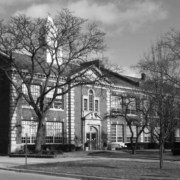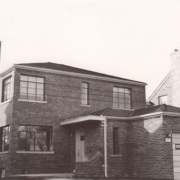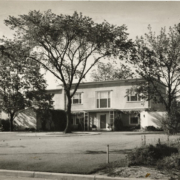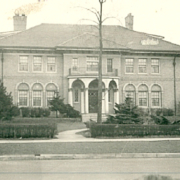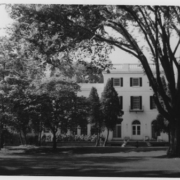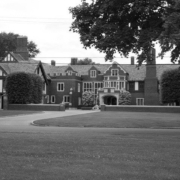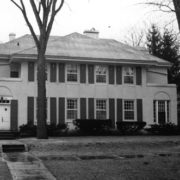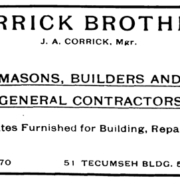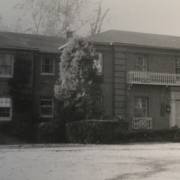Historical Architecture of Grosse Pointe – Stevens T. Mason School
Last week we presented the history of Robert Trombly Elementary School, designed by Smith, Hinchman, & Grylls. Completed in 1927, it’s considered “an architectural masterpiece”. In June 2020, Robert Trombly school was closed for good. This week we conclude our exploration of historic elementary schools in Grosse Pointe as we visit Stevens T. Mason Elementary School located at 640 Vernier Rd, Grosse Pointe Woods. The school was completed in 1928-1929, having been designed by renowned architect George J. Haas who primarily specialized in designing schools and municipal buildings on the east side of Metro Detroit. Before designing Stevens T. Mason School, Haas had already completed two schools for the Grosse Pointe Public School District – Defer Elementary School – 1925 (you can read the full story by clicking here) and Grosse Pointe South – 1928. Image courtesy of Google.
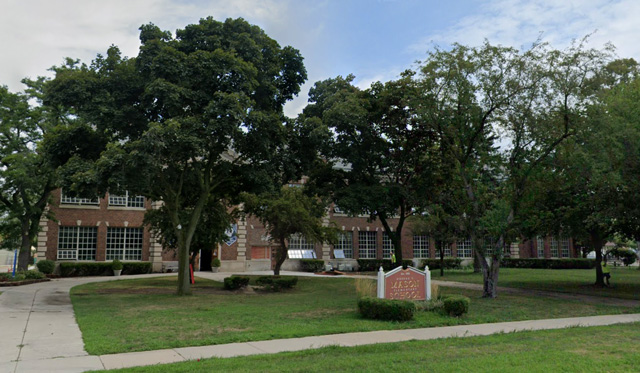
Prior to 1930, Grosse Pointe Public School District had dedicated large amounts of money to building school buildings that were, and still are, works of art. At the time some of the best architects in Detroit were hired to work on the projects. In terms of elementary schools alone, of which there were six constructed before 1950, we can confirm the following completion dates and costs for the schools constructed before 1930:
- Defer Elementary School, 1925 – cost: $390,000 (around $6.6m today)
- Robert Trombly Elementary School, 1927 – cost: $604,107 (around $10.2m today)
- Stevens T. Mason Elementary School, 1928-1929 – cost: $339,469 (around $5.8m today)
- Père Gabriel Richard Elementary School, in 1930, cost around $509,790 (around $9m today)
Elementary schools constructed after 1930:
- Maire Elementary School, 1936
- Kerby Elementary School, 1949
A sizable chunk of the costs involved in constructing the schools was the purchase of the multi-acre site(s) that the respective schools were located on. For instance, in 1928, three elementary school sites were purchased costing $410,000 (around $7.1m today). During this period of significant development, it is reported Grosse Pointe public schools spent $3,943,000 (around $70m today) on buildings and sites during a five-year period, 1925 – 1930. In the same period, it is reported the school population increased 82.7% from 1,642 to 3,000 pupils according to Dr. S. M. Brownell, superintendent of schools. Source: Detroit Free Press articles (April 1930 and October 1932).
In terms of the costs associated with the construction of Stevens T. Mason Elementary School an article in the Detroit Free Press reports the school cost $271,902 to build in 1928-1929, (around $4.7m today). The bond cost to purchase the five-acre site was $67,567 (around $1.1m today). At the time of completion, the school was described as “one of the largest rural schools in the country.” Source: Detroit Free Press (July 1928). The contract to construct the school was issued in May 1928, with completion scheduled for the fall of that year. Ultimately it was completed during the spring of 1929. At the time the surrounding community was called Lochmoor Village and was made up of several farms. Courtesy of the Grosse Pointe School website we learned of an interesting story from one of the school’s first teachers: “In 1929 I felt I was teaching out in the country for there were no sidewalks from the bus to the school and as I walked down the roadway, I would have to give way to a cow”. “It was necessary to carry a lunch as there were no eating places in Lochmoor Village”. “On PTA nights when we felt it was too far to go home and back, we shopped for groceries in the morning, brought them to school and then after school, cooked our dinner.”
The architectural style of the two-story building, at the time was described as Georgian Colonial. The school is constructed from brick in variegated reds and browns with Indiana limestone trim. The decorative detailing across the front elevation features a grand entrance with an open segmental pediment carved in limestone above the doors, while a much larger triangular shaped limestone pediment forms the gable (on the low-pitched roof) that is filled with a relief sculpture – a key element of classical architecture. The roof was finished in slate in variegated greens and purples. It is reported the interior contained six classrooms and other special rooms. The first floor was originally the location of a combined auditorium and gymnasium, a small lunchroom, general offices, the library, and the kindergarten. The second floor included classrooms, a clinic room, a playroom, and a locker room. All the corridors in the building were wainscoted with rose pink Tennessee marble. It is also reported all interior trim, except the library, was completed in white oak. The library, completed in a colonial style, was finished with red gum stained in walnut. Source and Image: Detroit Free Press (July 1928). Color image is courtesy of Katie Doelle.

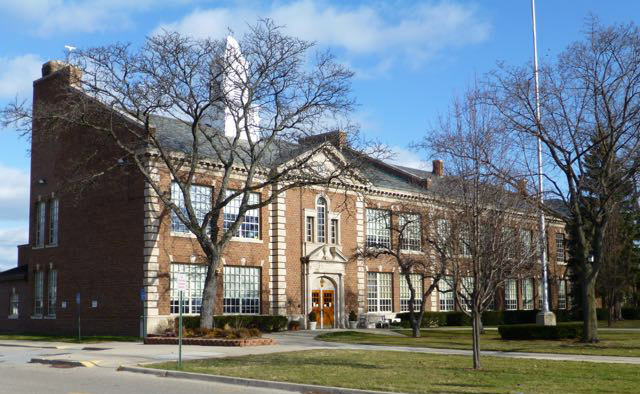
On May 8 1929, the Stevens T. Mason Elementary School was dedicated by the Grosse Pointe Board of education. It was Grosse Pointe’s sixth elementary school and opened with 102 pupils. The building was described as “the latest in school design”. “Alternators, specially designed cabinets, movable furniture, and other features were used to promote efficiency in teaching.” Source: Detroit Free Press (May 1929). The first phase of the building had a capacity for 325 pupils, however, it is reported the building, when fully complete, would ultimately house up to 1,500 pupils. Source: Grosse Pointe Civic News May 1929. In 1942, the school was expanded, with a new addition to meet its capacity goal. By 1951, enrollment had increased to 970 students.
It is reported the Board of Education, in naming the new school, decided to honor the first Governor of Michigan, Stevens T. Mason. Governor Mason, who passed in New York City in 1843, was known as the “Boy Governor.” It was reported “he is one of the most interesting historical figures in Michigan”.” Under his administration the public school system of the State was organized, and the first superintendent of public instruction appointed”. Source: Grosse Pointe Civic News September 1928.
The pre 1930 elementary schools of Grosse Pointe are superb examples of formal architecture, exhibiting style, grace, and functional consideration. How intelligent it was for the early leaders of the school district to create such a fantastic legacy for the community, and its families, who still enjoy the benefits today.
*Photos courtesy of the Higbie Maxon Agney archives unless stated.
** Research, information, and data sources are deemed reliable, but accuracy cannot be fully guaranteed.
Written by Katie Doelle
Copyright © 2022 Katie Doelle
If you have a home, building or street you would like us to profile please contact Katie Doelle – ktdoelle@gmail.com – we will try and feature the property.

